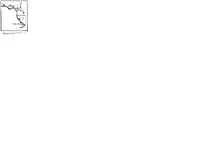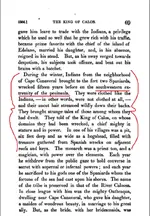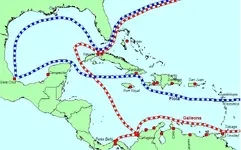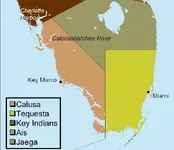Jolly Mon
Hero Member
- Joined
- Sep 3, 2012
- Messages
- 868
- Reaction score
- 631
- Golden Thread
- 0
- Primary Interest:
- All Treasure Hunting
- #1
Thread Owner
Florida anthropologist
Take note: this issue is from 1955...previous to the discoveries of Wagner.
I would suggest the authors might have been mistaken about the genesis of some of the porcelain fragments.
The Higgs site was postulated to be a "pirate rendezvous". It is kind of funny, in retrospect.

Of course this report is old, and oriental porcelain fragments have been found at MANY other sites, usually readily explainable as trade items or as the belongings of wealthy colonists. But early oriental porcelain fragments found in a relatively undeveloped coastal context might be indicative of a nearby shipwreck and not simply the remnants of trade or wealth. This is probably not a mind boggling hypothesis to many...but since porcelain is so much lighter than metal, it might well open the possibility of using the "Wagner methodology" in places it otherwise would be impossible. I do not believe a cob, lost in a wreck a mile offshore, stands much of a chance of ever making it into the surf zone. A piece of porcelain just might.
What the hell was oriental porcelain doing in a burial mound at Rookery Bay, for god sakes?
Take note: this issue is from 1955...previous to the discoveries of Wagner.
I would suggest the authors might have been mistaken about the genesis of some of the porcelain fragments.
The Higgs site was postulated to be a "pirate rendezvous". It is kind of funny, in retrospect.

Of course this report is old, and oriental porcelain fragments have been found at MANY other sites, usually readily explainable as trade items or as the belongings of wealthy colonists. But early oriental porcelain fragments found in a relatively undeveloped coastal context might be indicative of a nearby shipwreck and not simply the remnants of trade or wealth. This is probably not a mind boggling hypothesis to many...but since porcelain is so much lighter than metal, it might well open the possibility of using the "Wagner methodology" in places it otherwise would be impossible. I do not believe a cob, lost in a wreck a mile offshore, stands much of a chance of ever making it into the surf zone. A piece of porcelain just might.
What the hell was oriental porcelain doing in a burial mound at Rookery Bay, for god sakes?
Last edited:











